The New Testament is rich in the accounts of courageous, humble, beautiful women. The same is true of the women of the Old Testament. These women shaped history with their influence, faith, and … mistakes. Of the seven women pictured here, five of them we do not know their names. We are left to associate them only with their race, deeds, or condition.
The artists I have featured have made the scriptures come alive and added an additional dimension to the New Testament.
Mary
In the New Testament, a virgin chosen by God the Father to be the mother of His Son in the flesh. After Jesus’ birth, Mary had other children (Mark 6:3).
She was betrothed to Joseph, Matt. 1:18 (Luke 1:27). Joseph was told not to divorce Mary or release her from the betrothal, Matt. 1:18-25.
The angel Gabriel visited her, Luke 1: 26-38. She visited Elisabeth, her cousin, Luke 1:36, 40-45. Mary gave a psalm of praise to the Lord, Luke 1:46-55.
Mary went to Bethlehem with Joseph, Luke 2:4-5. Mary gave birth to Jesus and laid him in a manger, Luke 2:7. The shepherds went to Bethlehem to visit the Christ child, Luke 2:16-20. The wise men visited Mary, Matt. 2:11. Mary and Joseph fled with the child Jesus to Egypt, Matt. 2:13-14. After Herod’s death, the family returned to Nazareth, Matt. 2:19-23.
Mary and Joseph took Jesus to the temple in Jerusalem, Luke 2: 21-38. Mary and Joseph took Jesus to the Passover, Luke 2:41-52. Mary was at the wedding at Cana, John 2:2-5.
The Savior, while on the cross, asked John to care for his mother, John 19:25-27. Mary was with the Apostles after Christ was taken up into heaven, Acts 1:14. — Guide to the Scriptures
Liz Lemon Swindle
Liz Lemon Swindle began her painting career in first grade. Her first exhibitions were on the refrigerator, encouraged by her father. In the early 1980s she tutored under renowned wildlife artist, Nancy Glazier. In 1992, Liz began painting a subject matter she had long desired to approach: her faith. Her paintings are now held in corporate and private collections around the world and have been published in countless magazines and books. Liz and her husband Jon have five children and thirteen grandchildren.
Of her painting of Mary, Liz wrote:
How great is God’s plan that allows mere mortals to bring His children into the world, care for them, and help them make their way back to Him. How amazing that he trusts us when so much is at stake. How much more amazing and harder to comprehend is the experience of Mary, the mother of Jesus. We worry about our own responsibilities as parents. How much more was at stake to be a parent to the Son of God.
Image source: Repartee Gallery
Lydia
The Acts of the Apostles describes Lydia as follows:
And a certain woman named Lydia, a seller of purple, of the city of Thyatira, which worshipped God, heard us: whose heart the Lord opened, that she attended unto the things which were spoken of Paul.
And when she was baptized, and her household, she besought us, saying, If ye have judged me to be faithful to the Lord, come into my house, and abide there. And she constrained us. (Acts 16:14-15)
The name Lydia, meaning “the Lydian woman”, by which she was known indicates that she was from Lydia in Asia Minor. She was evidently a well-to-do agent of a purple-dye firm of Thyatira, a city southeast of Pergamum and approximately 40 miles inland, across the Aegean Sea from Athens.
As Paul preached, the Lord opened the heart of Lydia to receive the message about Jesus. She believed his words and responded to the teaching. She and the members of her household were baptized. Lydia insisted on giving hospitality to Paul and his companions in Philippi. They stayed with her until their departure, through Amphipolis and Apollonia, to Thessalonica.
We don’t know if Lydia was married, or single, or a widow.
Elspeth Young
Elspeth Young’s oil paintings express her lifelong fascination with capturing not only the human form, but the wonder of nature. Since graduating from Brigham Young University in 2003, she has worked fulltime as an artist, and while a diverse range of commissions has given her experience in various media, she now concentrates her painting primarily on religious art, in which her natural talent, exhaustive research, and craftsmanship are exemplary. — Al Young Studios
Image source: Al Young Studios
Samaritan Woman
The long account about Jesus and the Samaritan Woman at the Well is found in John 4:1-42 and is highly significant for understanding Jesus in several relationships: Samaritans, women, and sinners. By talking openly with this woman Jesus crossed a number of barriers which normally would have separated a Jewish teacher from such a person as this woman of Samaria. Jesus did three things that were highly unconventional and astonishing for his cultural-religious situation:
- He as a man discussed theology openly with a woman.
- He as a Jew asked to drink from the ritually unclean bucket of a Samaritan.
- He did not avoid her, even though he knew her marital record of having had five former husbands and now living with a man who was not her husband.
The disciples showed their astonishment upon their return to the well: “They were marveling that he was talking with a woman” (John 4:27). A man in the Jewish world did not normally talk with a woman in public, not even with his own wife. For a rabbi to discuss theology with a woman was even more unconventional.
Jesus did not defer to a woman simply because she was a woman. He did not hesitate to ask of the woman that she let him drink from her vessel, but he also did not hesitate to offer her a drink of another kind from a Jewish “bucket” as he said to her, “Salvation is of the Jews” (John 4:22). Salvation was coming to the Samaritan woman from the Jews, and culturally there was great enmity between the Jews and the Samaritans (considered a half-breed race by the Jews). Although she was a Samaritan, she needed to be able to drink from a Jewish “vessel” (of salvation) and Jesus no more sanctioned Samaritan prejudice against Jew than Jewish prejudice against Samaritan.
The key to Jesus’ stance is found in his perceiving persons as persons. He saw the stranger at the well as someone who first and foremost was a person—not primarily a Samaritan, a woman, or a sinner. This evangelized woman became an evangelist. She introduced her community to “a man” whom they came to acclaim as “the Savior of the world” (John 4:42).
Jesus liberated this woman and awakened her to a new life in which not only did she receive but also gave. The Bible says she brought “many Samaritans” to faith in Christ (John 4:39). — Wikipedia
Simon Dewey
“My earliest memory of drawing was at the age of five — my father gave me an old roll of wallpaper and a pencil and told me to fill the entire thing with sketches. I went about my assignment with unwavering commitment, covering the complete roll with a continuous procession of every conceivable image that might enter into the world a five year-old boy.”
As the boy Simon would watch his father’s meticulous brush strokes amidst the aroma of oil paints and the clutter of brushes, stretched canvases, and works in progress, something inside of him spoke of his own future. It was Joe’s passion for his pastime that fostered within Simon the joy of creation for creation’s sake, a true love of art, and an appreciation of the beauty of human form. It was those early values that eventually guided Simon to follow in his father’s footsteps as a portrait painter.
Simon decided to develop his talents with more of a hands-on approach and took a job as a corporate visual-aids illustrator spending his spare time studying the work of his heroes Norman Rockwell, Harry Anderson and Tom Lovell. While working in the heart of the City of London directly opposite the splendid St. Paul’s cathedral Simon honed his artistic skills and quickly became recognized for his exceptional illustration abilities. This led to a position as the sole illustrator in a small design firm where Simon learned to produce detailed paintings under tight deadlines.
In his spare time Simon pursued his real passion of creating family and religious art. As he was inspired, Simon painted renditions of his favorite passages of scripture or images of his own children. Receiving so many requests for copies of these images, he entered the world of published fine art. Simon has become known for his sensitivity towards his subjects which is exquisitely revealed in his detailed and delicate portraits capturing moments in time from the tender to the magnificent. Many marvel at the masterful way Simon portrays the love and compassion in the face of the Savior Jesus Christ, or the devotion in the eyes of a believer. Those close to Simon understand this ability is founded in his own firm and abiding faith. — Altius Fine Art
Image source: Altus Fine Art
Woman Taken In Adultery
The scribes and Pharisees brought before Jesus a woman taken in adultery so that they might entrap Him.
But Jesus stooped down, and with his finger wrote on the ground, as though he heard them not.
So when they continued asking him, he lifted up himself, and said unto them, He that is without sin among you, let him first cast a stone at her.
And again he stooped down, and wrote on the ground.
And they which heard it, being convicted by their own conscience, went out one by one, beginning at the eldest, even unto the last: and Jesus was left alone, and the woman standing in the midst.
When Jesus had lifted up himself, and saw none but the woman, he said unto her, Woman, where are those thine accusers? hath no man condemned thee?
She said, No man, Lord. And Jesus said unto her, Neither do I condemn thee: go, and sin no more. (John 8:6–11).
The great Atonement was the supreme act of forgiveness. The magnitude of that Atonement is beyond our ability to completely understand. I know only that it happened, and that it was for me and for you. The suffering was so great, the agony so intense, that none of us can comprehend it when the Savior offered Himself as a ransom for the sins of all mankind.
It is through Him that we gain forgiveness. It is through Him that there comes the certain promise that all mankind will be granted the blessings of salvation, with resurrection from the dead. It is through Him and His great overarching sacrifice that we are offered the opportunity through obedience of exaltation and eternal life.
May God help us to be a little kinder, showing forth greater forbearance, to be more forgiving, more willing to walk the second mile, to reach down and lift up those who may have sinned but have brought forth the fruits of repentance, to lay aside old grudges and nurture them no more. — Gordon B. Hinckley, “Forgiveness,” Ensign, Nov 2005, 81
Rembrandt
Rembrandt Harmenszoon van Rijn was a Dutch painter and etcher. He is generally considered one of the greatest painters and printmakers in European art history and the most important in Dutch history. His contributions to art came in a period that historians call the Dutch Golden Age.
Having achieved youthful success as a portrait painter, his later years were marked by personal tragedy and financial hardships. Yet his etchings and paintings were popular throughout his lifetime, his reputation as an artist remained high, and for twenty years he taught nearly every important Dutch painter. Rembrandt’s greatest creative triumphs are exemplified especially in his portraits of his contemporaries, self-portraits and illustrations of scenes from the Bible. His self-portraits form a unique and intimate biography, in which the artist surveyed himself without vanity and with the utmost sincerity.
In both painting and printmaking he exhibited a complete knowledge of classical iconography, which he molded to fit the requirements of his own experience; thus, the depiction of a biblical scene was informed by Rembrandt’s knowledge of the specific text, his assimilation of classical composition, and his observations of Amsterdam’s Jewish population. Because of his empathy for the human condition, he has been called “one of the great prophets of civilization.” — Wikipedia
Image source: Wikimedia Commons
Widow’s Mite
One of the most humbling and powerful stories from the life of the Savior is that of the widow’s mite. Jesus’ words on this occasion leave us with much to ponder as we measure our generosity against that of a “certain poor widow.”
While Jesus sat teaching in the outer court of the temple, He noticed a lone, destitute woman as she approached one of the 13 trumpet-shaped receptacles provided for the voluntary deposit of contributions by worshipers. It was Passover time, and the temple court was crowded with people from all walks of life. Just ahead of her had been several rich people who had thrown large amounts of money into the basins. As the woman approached, Jesus discerned the hearts of those in the line and called to His disciples.
He pointed to the woman and said, “This poor widow hath cast more in, than all they which have cast into the treasury” (Mark 12:43). But she had only given two mites, the smallest coins then in circulation in Palestine! Jesus then explained the mystery: “For all the rich did cast in of their abundance; but she, notwithstanding her want did cast in all that she had, yea, even all her living” (Joseph Smith Translation, Mark 12:44).
It is not the amount of money that we donate to the Church or others that matters to the Lord. Rather it is whether we give of our abundance or of our living. We should give until it is a sacrifice to give.
To the individuals and families of the Church who struggle with finding enough money to pay their obligations, I say: Take care of your financial duties to God, nation, and others first. This may mean that you will have to postpone the acquisition of some of the comforts and conveniences of life you greatly desire. Casting in all that you have will mean that you must “seek … first the kingdom of God, and his righteousness; and all these things shall be added unto you” (Matt. 6:33).
To those who have in abundance, even more than you need, I say: Find happiness in the relationships and service you share with God, family, and others. Resist the feeling of constantly needing things just to entertain yourself and occupy your time. We have the scriptures and books of all kinds available. Conversation and service are a better use of time than watching television. Casting in all that you have will be so much more rewarding than the alternative of personal gratification. — William R. Bradford, “Words of Jesus: Riches,” Ensign, Feb 2003, 52
James Christensen
Brother Christensen is a professor of art at Brigham Young University and enjoys a national reputation as a fantasy artist. His work has appeared in Time/Life Books’ series The Enchanted World, as well as on many book covers and in magazines. He has served as president of the National Academy of Fantastic Art. His paintings are exhibited in galleries throughout the United States.
Have any books influenced your development as a painter?
Many have. When I first read the Chronicles of Narnia by C. S. Lewis I said, “This person has imagination, whimsy, delight, wonder, exploration, and yet there’s the Savior right at the center of the book. There are metaphors for selfishness, for selflessness, for sacrifice and atonement. There is the gospel put in a nongospel context. And he’s not writing just for a religious audience. He’s accepted out there in the real world.” I found the same thing with J. R. R. Tolkien. This happened while I was in college. The fact that their fantasy was considered as a viable kind of expression gave me the courage to say, “Why don’t I try to do the same sort of thing visually and see what happens?”
Another great influence is the Book of Mormon. I know that it is real and true, but it is also a great epic adventure. There are ancestral swords and directional devices that work and don’t work according to our feelings and attitudes. There are natural disasters and divine interventions and quests and wars and miracles.
You have done several fine religious paintings outside the fantasy genre. Why don’t you do more of that?
The best of my overtly religious painting may be the best things that I paint, but they’re very hard for me to paint because I don’t want to simply illustrate. I have no interest in doing things that are sentimental and one-dimensional. I want my paintings to have layers of meaning within them.
The other reason it’s difficult is that I have very tender feelings on the subject of religion. I have very deep feelings about the gospel and the Savior. What if I put those feelings on canvas and my ability doesn’t reach the level of my belief? Or what if it’s not read correctly by people? What if they say, “That’s not a very good painting?” They’re saying I don’t have a very good belief. It’s too personal to put on the block. It would be like bearing your testimony to somebody and having them say, “So?” — “Windows on Wonder: An Interview with James C. Christensen,” New Era, Aug 1989, 44
Image source: Repartee Gallery
Woman With An Issue Of Blood
In the October 2006 General Conference, Anne C. Pingree said:
I love the symbolism of women reaching out to touch the Savior. We long to be close to the Lord, for we know that He loves each of us and desires to encircle us “eternally in the arms of his love.” His touch can heal ailments spiritual, emotional, or physical. He is our Advocate, Exemplar, Good Shepherd, and Redeemer. Where else would we look, where else would we reach, where else would we come but to Jesus Christ, “the author and finisher of our faith”?
He pronounced: “Yea, verily … , if ye will come unto me ye shall have eternal life. Behold, mine arm of mercy is extended towards you, and whosoever will come, him will I receive.” His promise invites us not only to reach towards Him but also to take the all-important next step: to come unto Him.
This is such a motivating, cheering doctrine. The Messiah extends His arm of mercy to us, always eager to receive us—if we choose to come to Him. When we do come to the Savior with “full purpose of heart,” we will feel His loving touch in the most personal ways.
A “certain woman” made that choice and felt His touch.
And a woman having an issue of blood twelve years, which had spent all her living upon physicians, neither could be healed of any,
Came behind him, and touched the border of his garment: and immediately her issue of blood stanched.
And Jesus said, Who touched me? When all denied, Peter and they that were with him said, Master, the multitude throng thee and press thee, and sayest thou, Who touched me?
And Jesus said, Somebody hath touched me: for I perceive that virtue is gone out of me.
And when the woman saw that she was not hid, she came trembling, and falling down before him, she declared unto him before all the people for what cause she had touched him, and how she was healed immediately.
And he said unto her, Daughter, be of good comfort: thy faith hath made thee whole; go in peace. (Luke 8:43-48)
I have asked myself what might have happened if this woman with the issue of blood had not believed in the Savior enough to make whatever effort was necessary to touch the border of His robe. In that throng I imagine getting even that close to Him took some doing. Yet, “nothing wavering,” she persisted.
Al Young
In 1997, Al and Nancy Young founded Al Young Studios for their work in fine art and publishing. Over the years, as their children chose to participate in the work of the Studios, the enterprise has grown to include a broad range of media and publications. Original artworks include oil paintings, print making, stained glass, pen and ink, and water color. Publications include The Storybook Home Journal, Inspired music albums, My Father’s Captivity (historical), The Wainscott Collection (historical fiction), and numerous articles pertaining primarily to home and family life.
Image source: Al Young Studios
Jairus’s Daughter
There was an incident in the life of the Savior that was mentioned by Matthew, Mark, and Luke. A significant part of the story is told by Mark in only two short verses and five words of the following verse. Let me read them to you.
And, behold, there cometh one of the rulers of the synagogue, Jairus by name; and when he saw him [that is, when he saw Jesus], he fell at his feet,
And besought him greatly, saying, My little daughter lieth at the point of death: I pray thee, come and lay thy hands on her, that she may be healed; and she shall live.
And Jesus went with him. (Mark 5:22–24)
The reading time of that portion of the story is about thirty seconds. It is short and uncomplicated. The visual picture is clear and even a child could repeat it without difficulty. But as we spend time in thought and contemplation, a great depth of understanding and meaning comes to us. We conclude that this is more than a simple story about a little girl who was sick and Jesus went to lay his hands on her. Let me read these words to you again:
“And, behold.” The word behold is used frequently in scripture with a wide variety of meanings. Its use in this instance designates suddenness or unexpectedness. Jesus and those who were with him had just recrossed the Sea of Galilee, and a multitude of people who had been waiting met him on the shore near Capernaum. “And, behold [suddenly and unexpectedly], there cometh one of the rulers of the synagogue.” The larger synagogues of that day were presided over by a college of elders under the direction of a chief or a ruler. This was a man of rank and prestige whom the Jews looked upon with great respect.
Matthew doesn’t give the name of this chief elder, but Mark identifies him by adding to his title the words, “Jairus by name.” Nowhere else in the scriptures does this man or his name appear except on this occasion, yet his memory lives in history because of a brief contact with Jesus. Many, many lives have become memorable that otherwise would have been lost in obscurity had it not been for the touch of the Master’s hand that made a significant change of thought and action and a new and better life.
“And when he saw him [that is, when Jairus saw Jesus], he fell at his feet.”
This was an unusual circumstance for a man of rank and prestige, a ruler of the synagogue, to kneel at Jesus’ feet—at the feet of one considered to be an itinerant teacher with the gift of healing. Many others of learning and prestige saw Jesus also but ignored him. Their minds were closed. Today is no different; obstacles stand in the way of many to accept him.
“And [Jairus] besought him greatly, saying, My little daughter lieth at the point of death.” This is typical of what happens frequently when a man comes to Christ, not so much for his own need, but because of the desperate need of a loved one. The tremor we hear in Jairus’s voice as he speaks of “My little daughter” stirs our souls with sympathy as we think of this man of high position in the synagogue on his knees before the Savior.
Then comes a great acknowledgement of faith: “I pray thee, come and lay thy hands on her, that she may be healed; and she shall live.” These are not only the words of faith of a father torn with grief but are also a reminder to us that whatever Jesus lays his hands upon lives. If Jesus lays his hands upon a marriage, it lives. If he is allowed to lay his hands on the family, it lives.
The words, “and Jesus went with him” follow. We would not suppose that this event had been within the plans for the day. The Master had come back across the sea where the multitude was waiting on the shore for him to teach them. “And behold”—suddenly and unexpectedly—he was interrupted by the plea of a father. He could have ignored the request because many others were waiting. He could have said to Jairus that he would come to see his daughter tomorrow, but “Jesus went with him.” If we follow in the footsteps of the Master, would we ever be too busy to ignore the needs of our fellowmen?
It is not necessary to read the remainder of the story. When they got to the home of the ruler of the synagogue, Jesus took the little girl by the hand and raised her from the dead. In like manner, he will lift and raise every man to a new and better life who will permit the Savior to take him by the hand. — Howard W. Hunter, “Reading the Scriptures,” Ensign, Nov 1979, 64
Greg Olsen
Greg was blessed with very supportive parents who always encouraged him and provided opportunities for him to pursue his passion of art. Greg remembers a time as a teenager when he had been hired to paint a large sign for a local grocery store. It was wintertime and too cold to paint in the garage so his parents let him set up a workshop in his bedroom. He promptly spilled two quarts of black and orange enamel paint all over his bedroom carpet. Amazingly, his parents still encouraged him in his artistic endeavors.
From an early age I have always been fascinated by paintings that create mood, emotion and atmosphere; especially those paintings that lift me and transport me to some far off place. These are the elements I strive to create in my paintings. My paintings in many ways record what is most important to me: my feelings and experiences with family and friends along with the spiritual aspects of my life. My hope is that in these images you will find something familiar, something which will resonate and remind you of what is important in your own life. — Greg Olsen
By the time Greg reached Jr. high School he began to take it quite seriously, and when he entered Bonneville High School he was fortunate to have an extremely good art teacher, who perhaps, contributed more to Greg’s art education and desire to make it his life’s work than any other person. — Greg Olsen Art
Image source: Gospel Art Book
Further Reading
- Sisters at the Well: Women and the Life and Teachings of Jesus
- The New Testament: Through 100 Masterpieces of Art
- Women in the New Testament: Questions and Commentary

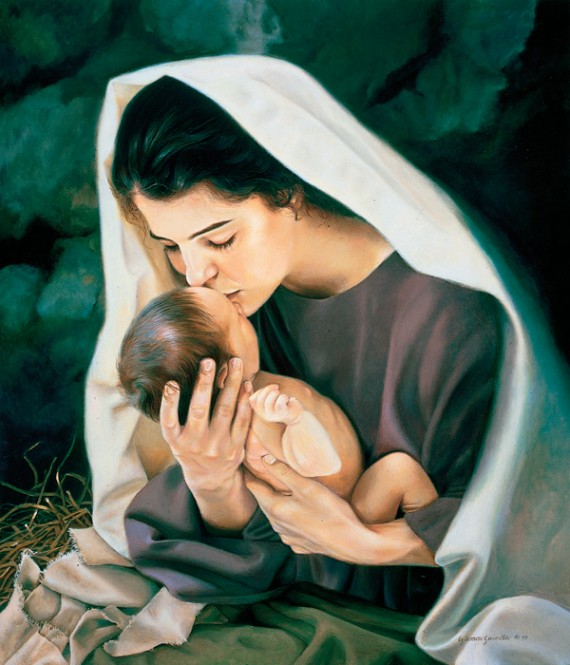
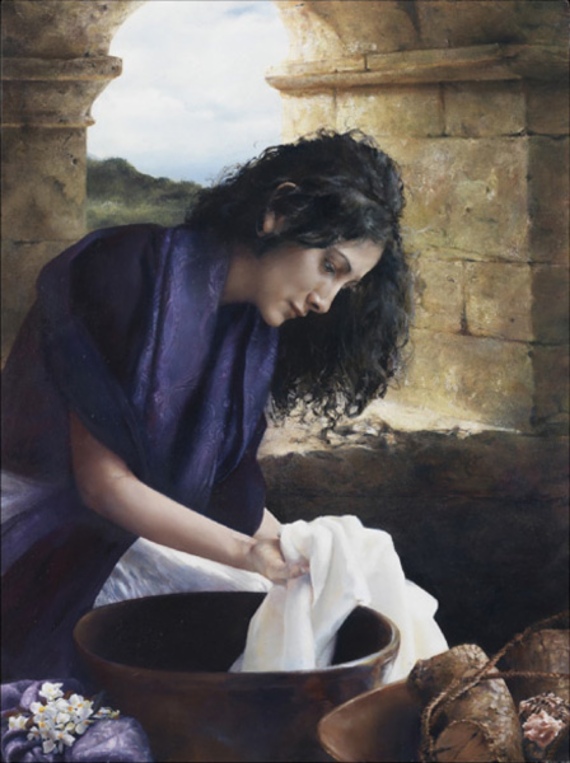
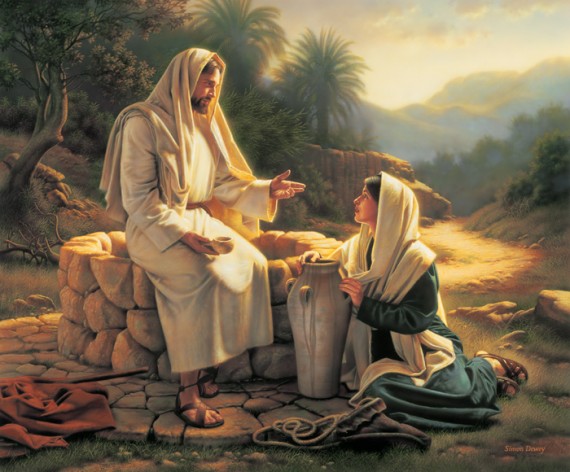
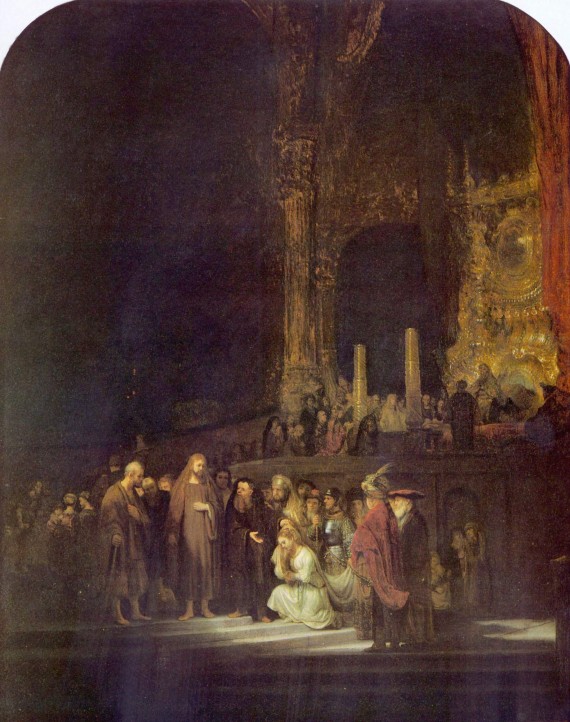
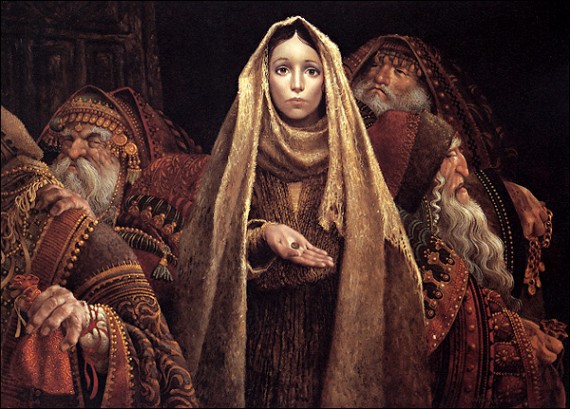
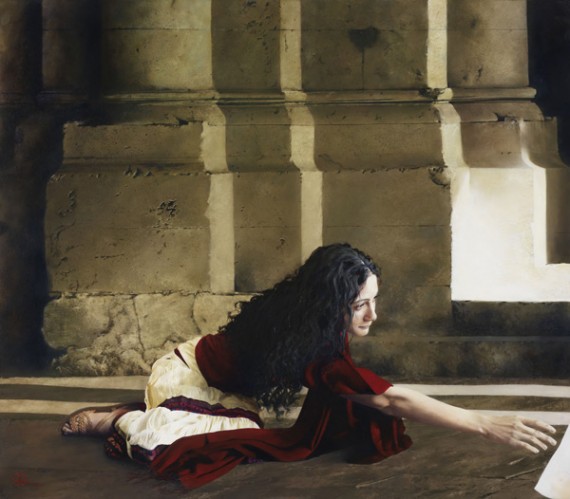
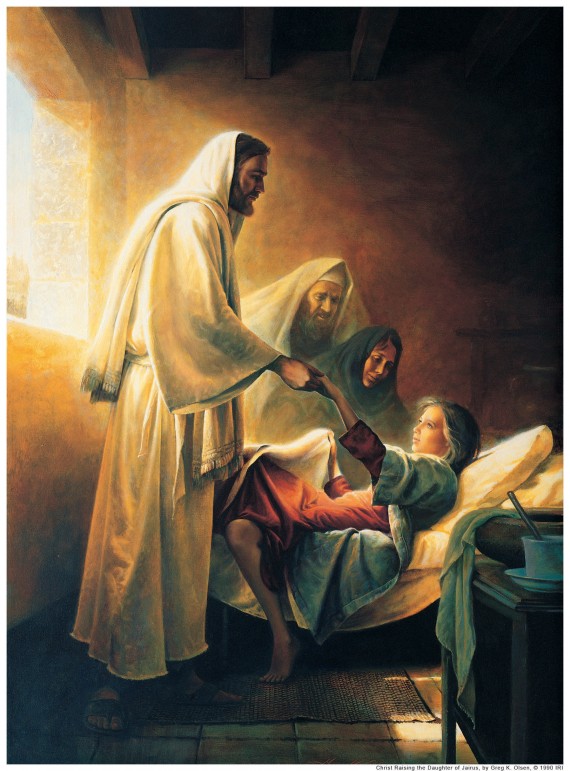
Wow! This is a great collection of Biblical art! These artists’ creativity and imagination are amazing.
wow these are absolutely beautiful
Love this post. Thank you for sharing your knowledge and the beautiful art. I love that art can help testimonies grow even stronger. I had never seen that Rembrandt. Great post!
Art for me helps to add some color to the scriptures I have read. The art helps me to remember the lessons learned from the scriptures.